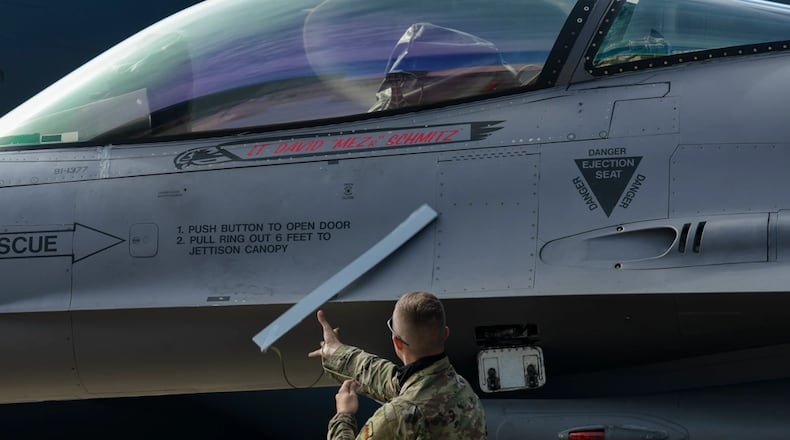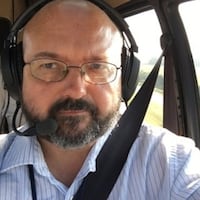Defendants in the lawsuit are F-16 manufacturer Lockheed Martin; aircraft ejection systems producer Rockwell Collins, Inc.; Teledyne Risi Inc., doing business as Teledyne Electronic Safety Products; Teledyne Risi Inc., doing business as Teledyne Energetics; and Teledyne Technologies Inc. Teledyne makes ejection system parts, the lawsuit says.
At issue is a digital sequencer or “DRS” unit in the F-16 ejection seat system, plaintiff’s attorney James Brauchle said in an interview Wednesday. Through a Freedom of Information Act request, his legal team obtained slides produced after the accident in which AFRL expressed concerns about whether DRS components were genuine, he said.
The pilot’s ejection seat parachute failed to deploy in a crash at Shaw Air Force Base, South Carolina, the lawsuit says.
“We represent the widow, and she wants to know the reason her husband died,” Brauchle said.
“The USAF Research Laboratory determined that counterfeit parts may have contributed to 1st Lt David J. Schmitz’s DRS malfunction,” the lawsuit states. “Upon information or belief, LOCKHEED, COLLINS, RISI and TELEDYNE were aware, or should have been aware DRS units contained counterfeit parts.”
AFRL is headquartered at Wright-Patterson Air Force Base.
According to the lawsuit: Air Force pilot Schmitz, “suffered grievous injuries and ultimately was killed” when he ejected from his stricken F-16 ‘Fighting Falcon’ jet, but his Advanced Concept Ejection Seat failed to function as designed when its “digital recovery sequencer” or DRS mechanism, malfunctioned.
The suit contends that after Schmitz’ death, AFRL determined his ejection system’s “malfunctioning” DRS contained “six suspected counterfeit Metal-OxideSemiconductor Field-Effect Transistors (MOSFET), three suspected counterfeit serial flash memory chips, and a suspected counterfeit parallel flash memory chip.”
Neither the Air Force nor AFRL are defendants in the lawsuit. Brauchle said the “Feres” legal doctrine prohibits military spouses from suing the government after active-duty military members are killed in the line of duty.
A Power Point presentation plaintiffs attorneys obtained “suggests that based on the physical (evidence), that the evidence they (Air Force investigators) saw, they suspected the parts were counterfeit,” Brauchle said. The Air Force intended to send those parts out for further testing, but the attorney said he has not seen those results.
Brauchle said the Air Force has denied his request for further information on additional testing. But he added: “Based on all the things they were identifying, boy, it seemed pretty damn clear.”
A former Air Force C-141 navigator, Brauchle said counterfeit parts “have been something that have been around the Air Force for decades.”
An AFRL representative Wednesday said he could not arrange an interview on the lawsuit or the issues it raises. Requests for comment were sent to media contacts for Collins Aerospace and Teledyne Technologies Inc.
“In general, it is our practice not to comment on pending litigation,” a Lockheed Martin spokeswoman said.
The suit seeks all economic and non-economic damages allowed by law.
The Air Force Times first reported the lawsuit.
About the Author

